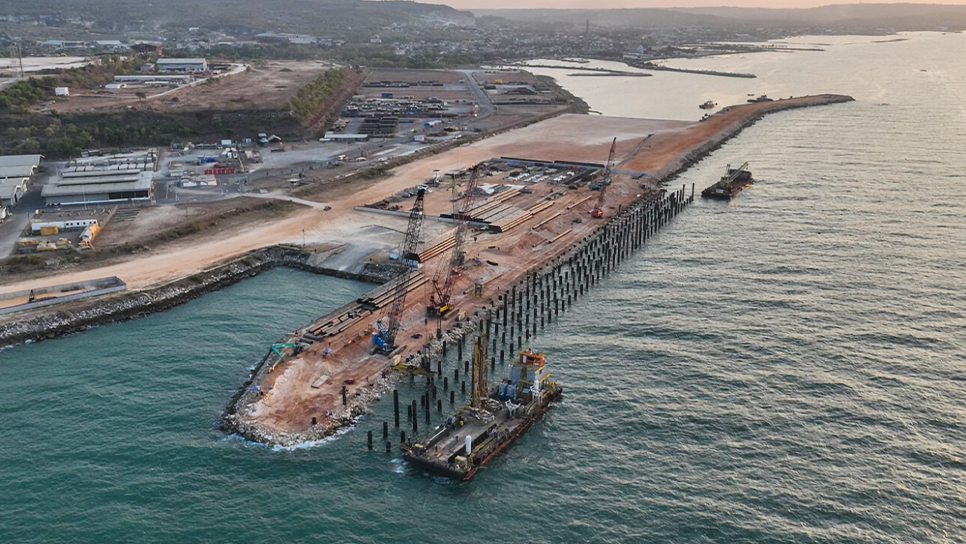East Java Multipurpose Terminal (EJMT), International Container Terminal Services, Inc.’s (ICTSI) business unit in East Java, Indonesia, hosted a ground-breaking ceremony last October 12th to showcase the development of a new state-of-the-art gateway for the Lamongan, Tuban and central Java hinterlands.
The development consists of a 300-meter quay line, breakwater, super heavy lift breakbulk deck, and dredging of the navigational channel to -13.5 meters. It will be supported by two post-Panamax mobile harbour cranes and other cargo handling equipment.
“We are very excited with this new terminal development as it will provide a new and more accessible gateway for our hinterland customers in Lamongan, Tuban and up to central Java. Catering to an already thriving industry with this new investment, EJMT is well-positioned to support the growing economy of East Java and Indonesia,” said Patrick Chan, EJMT chief executive officer.
“Lamongan Shorebase has been operating and supporting oil and gas customers since 2006. The development of EJMT will provide domestic and international access to our existing and new customers, who will also benefit from the reduced overall supply chain costs. The heavy lift deck will allow us to support the upcoming project developments in Eastern Indonesia, as well as receive decommissioned platforms,” explained David Lim, PT Eastern Logistics chief executive officer. PT Eastern Logistics is the operator of Lamongan Shorebase.
Gerard Langes, ICTSI head of Business Development – APAC region and the Philippines, said: “ICTSI, as the world’s largest independent terminal operator, is pleased to continue its growth by adding EJMT to its global portfolio. By building positive relationships with stakeholders, ICTSI is contributing to the sustainable economic and social well-being of the local community.”
Construction of the new terminal is being carried out by EJMT’s local partners PT. PP (Persero). With the current works, EJMT will be ready to receive its first vessel by September 2024.



